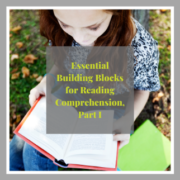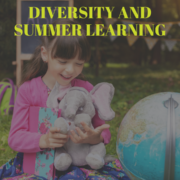Encouraging Reflective Processes in the Classroom
A significant aspect of growth mindset, which we have discussed in earlier blogs, involves reflection through self-assessment and thoughtful consideration. While students might enact reflective practices naturally, and without much conscious effort, the key for growth and understanding is to actively engage in purposeful reflection. So, what can teachers do to encourage this process? Plenty!
Most educators have heard of a KWL chart, which asks students to consider what they already know, want to know, and what they will eventually learn about a certain subject or topic. Often times, we utilize the KWL chart as a concept starter, but then we rarely have students revert back to it for reflection after the fact. This is a missed opportunity for reflection because at the center of a KWL chart, the essence, if you will, is the chance for students to reflect on prior knowledge and how that knowledge might connect to other concepts soon to be introduced. In doing this, the KWL chart, which some educators might consider a basic activator, transforms into more of a higher level thinking practice. To utilize it purposefully, teachers should focus much of the attention on the “K” section of the chart; form the opening discussion on what students are able to muster from memory and directed reflection. This way, students are able to garner a more in-depth view of the new concept by tying it to their prior knowledge.
Teachers can also spur reflection before beginning a new concept by asking students to consider the purpose of an upcoming task or project before they even get started. By asking students to consider the task and then reflect on similar tasks that they have completed before that might relate, students begin to make additional connections and cross-curricular links. There is also a real-world component at play here. When students know why they are tasked with an assignment, they are able to invest more attention and effort, especially when the objective is tied to a real-world concept or practice.
Reflection after the fact, what most of us consider to be linked with growth mindset and self-improvement, is obviously just as beneficial. When we encourage students to reflect, the process should extend beyond the material or content—they should truly be reflecting on the process or experience of learning. That is, ask students which method, activity, homework practice, or organizer was the most beneficial to their overall understanding. Did visuals or hands-on opportunities allow for more of a grasp? If students were to design their own assignment, which options would they prefer to use to reach the final objective? These thoughts and considerations act as subtle feedback to teachers, but also help to prompt students to consider who they are as learners and which strategies work best for them in certain scenarios.
Reflection can also happen with peer feedback. This is especially beneficial when assessing a peer’s writing. In seeing how another student approached the essay, planned the research, executed the argument, etc., it triggers an automatic reflective response—students begin to assess their own work against that of their peers. In reviewing a peer’s writing, students are subtly encouraged to think back to their own writing tendencies and how another person interpreted the task somewhat differently. This broadens a student’s understanding of their writing as a whole and allows them to see another’s perspective simultaneously.






